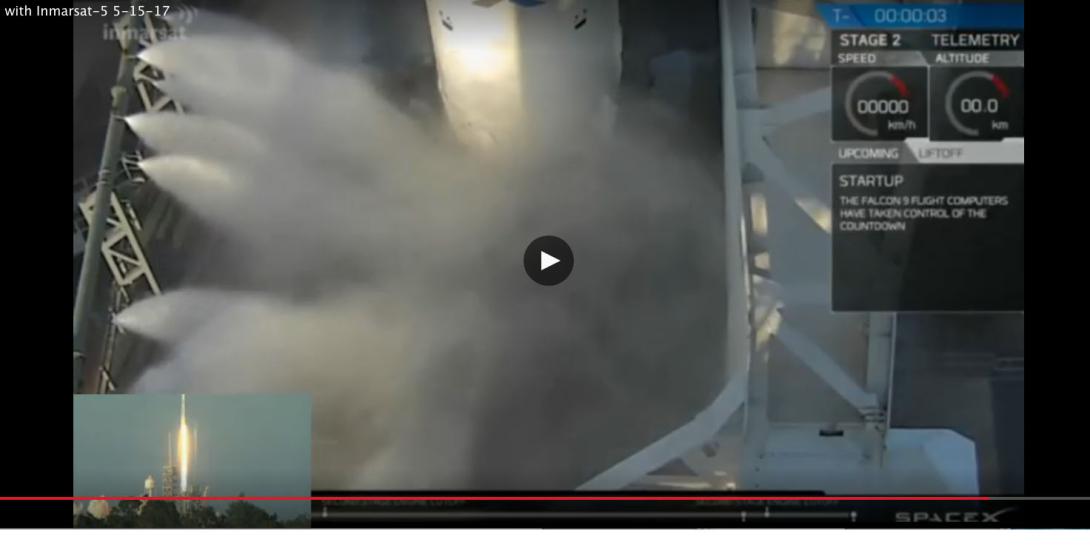SpaceX Delivers Inmarsat Satellite into Orbit
The fourth Inmarsat Global Xpress satellite boosted into space on a SpaceX rocket, adding broadband capabilities to high-frequency network.
The fourth Inmarsat Global Xpress satellite successfully boosted into space Monday evening on a SpaceX Falcon rocket, adding broadband capabilities to a network of high frequency satellites.
Inmarsat-5 (I-5) F4 will join the constellation of communications satellites providing global voice, video and data coverage, joining three Global Xpress satellites already in orbit to deliver service to users on land, at sea and in the air. I-5 F1 became operational in July 2014 and is positioned over the Indian Ocean covering Europe, the Middle East, Africa and parts of Asia. I-5 F2 become operational in August 2015 and covers the Americas and the Atlantic Ocean. I-5 F3 became operational in December 2015 and is positioned over the Pacific Ocean. This fourth satellite adds further capacity to the network as well as in-orbit redundancy that further upgrades the reliability and resilience of Inmarsat’s service offerings.
The satellite was launched by SpaceX on a Falcon 9 rocket, which successfully took off at 7:21 p.m. Eastern time Monday from launch pad 39A at NASA’s Kennedy Space Center in Florida. Following satellite separation at 7:53 p.m., engineers acquired telemetry from the Perth ground at 8:04 p.m., according to a press statement.
The launch team from Inmarsat and Boeing Network and Space Systems, which manufactured I-5 F4, now are raising the spacecraft to a geostationary orbit, at which point the satellite will deploy its solar arrays and reflectors and undergo payload testing.
“I-5 F4 augments the capabilities of [Global Xpress], and alongside our existing L-band constellations, enables Inmarsat to provide guaranteed global connectivity to industries and governments worldwide,” Rupert Pearce, Inmarsat’s CEO, said in a statement.
In 2010, Inmarsat embarked on a $1.6 billion effort to provide a single global Ka-band network of satellites. Boeing Satellite Systems International is building the Global Xpress constellation at its El Segundo, California, facility on the same manufacturing line as the Wideband Global SATCOM (WGS) for the U.S. government.




Comments